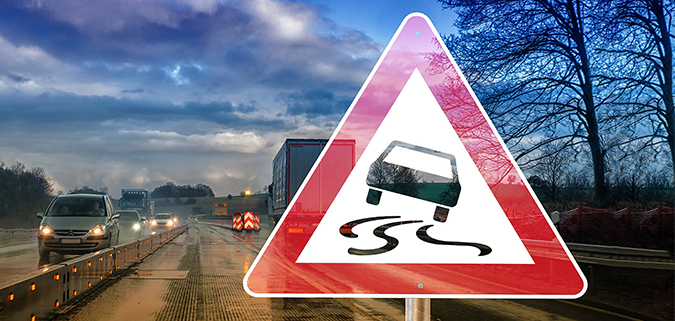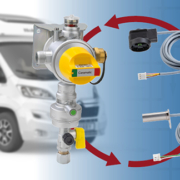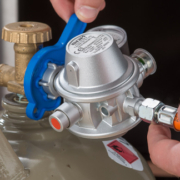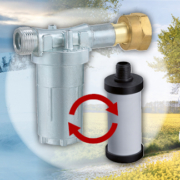How does the GOK crash sensor for motor caravans and caravans work?
Many campers have already come across the term “crash sensor” in connection with operating the gas system. If you want to draw gas from the connected gas cylinder while driving your leisure vehicle, you need this crash sensor from GOK, among other things. In this article we clarify the most important questions relating to safety device and explain how it works.
***Update***
The following article only refers to the wall-mounted gas pressure regulation systems from GOK, in order to be able to operate the vehicle with LPG during the journey. The newly developed Caramatic SafeDrive also has an integrated crash sensor, but has a completely different system design. More information here:
What do I need the crash sensor for?
In addition to the excess flow device, the crash sensor is one of the two safety devices which are mandatory when a camper wants to operate the gas system in a leisure vehicle while driving.
The crash sensor generally serves as protection in the event of an accident with the leisure vehicle. The safety device shuts off the gas flow immediately and prevents unburned LPG from escaping.
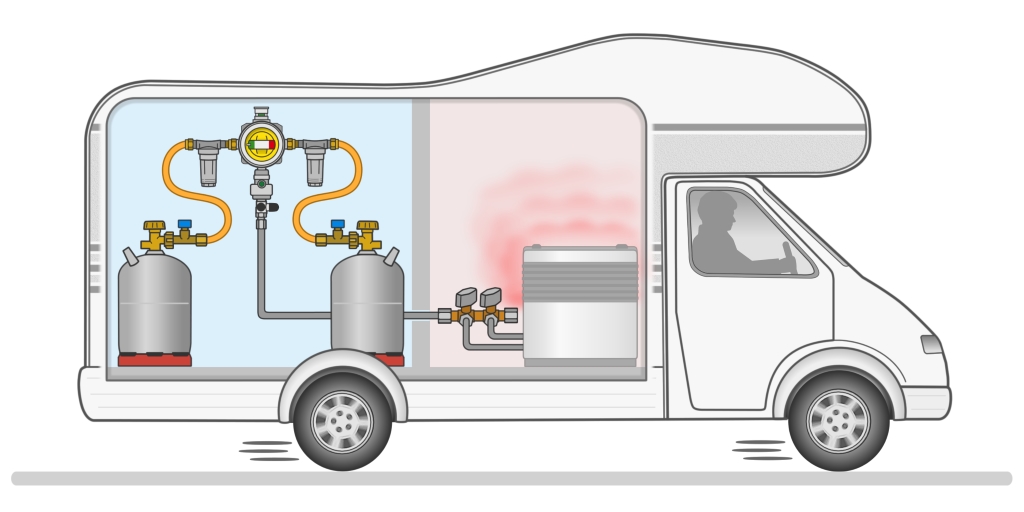
Where is the crash sensor installed?
All gas pressure regulation systems from GOK which are suitable for heating while driving have a crash sensor integrated. These are primarily the Caramatic DriveOne for single-cylinder systems and the Caramatic DriveTwo for two-cylinder systems.
Both gas pressure regulation systems are available in various versions:
- for horizontal or vertical installation
- for 30 or 50 mbar working pressure (systems with ‘protection of older systems that will still be preserved)
How does the crash sensor of the Caramatic systems work?
Here we explain the function of the crash sensor with pendulum solution, presented by GOK in August 2021. For start-up, the camper must press the reset button. This puts the valve unit into the open position. At the same time, a pendulum swings to the corresponding position in order to hold the valve unit in the open position and thus to enable the gas flow.
For example, if there is a collision with the motor caravan or caravan, the crash sensor blocks the gas flow straight away. At an impact speed of approx. 15 to 20 km/h against a fixed barrier, the pendulum leaves its original position. This moves the sealing unit down, closes the gas flow and prevents unburned LPG from escaping.
How do I start up the crash sensor?
As mentioned in the previous paragraph, the camper must first press the reset button. By pressing the button, the pendulum swings into the intended position – the crash sensor is unlocked and brought to its functional position.
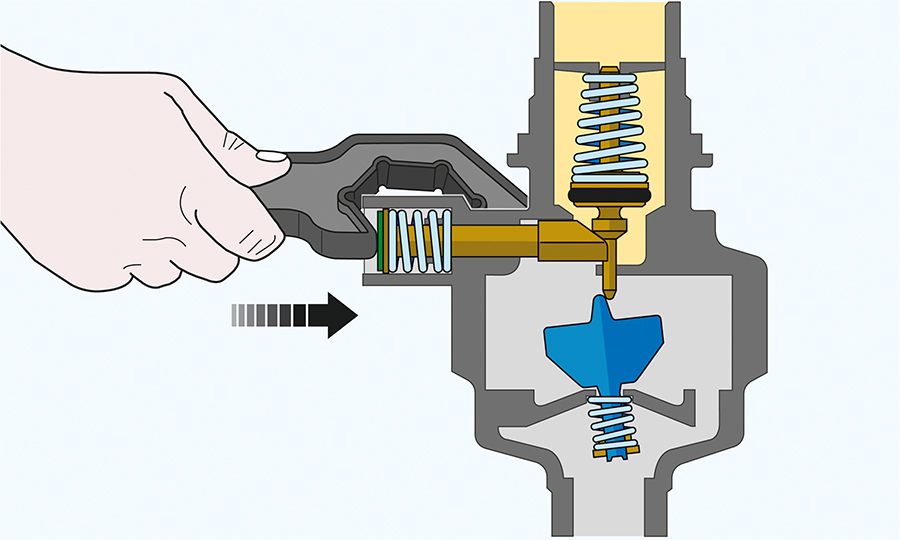 2. The pendulum keeps the valve unit open – gas flow open
2. The pendulum keeps the valve unit open – gas flow open 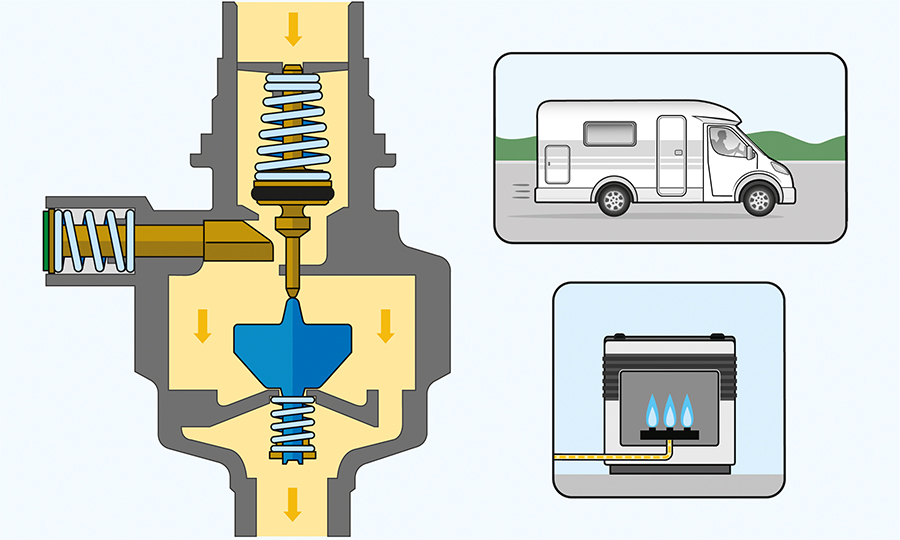 3. In an accident, the crash sensor closes – gas flow stopped
3. In an accident, the crash sensor closes – gas flow stopped 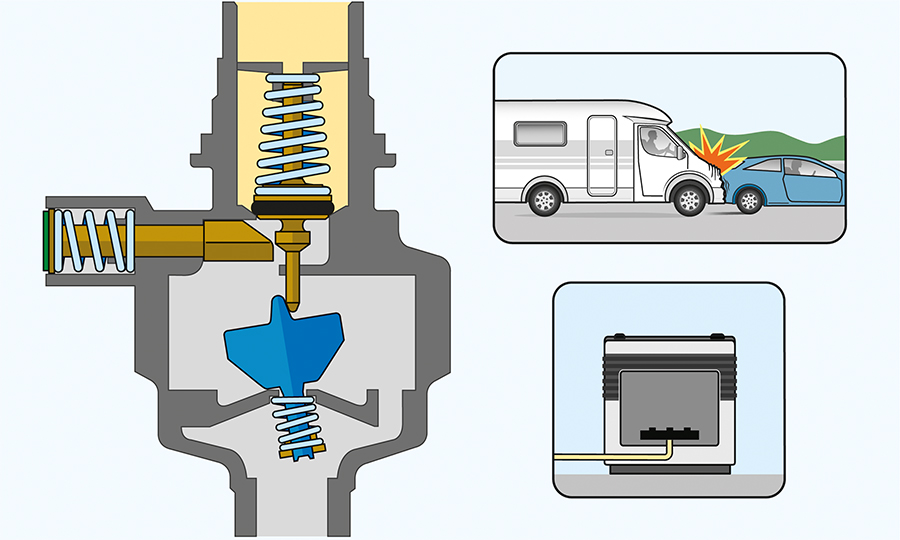
We hope that you never get into the unfortunate situation of an accident. Nevertheless, if this occurs and the crash sensor has tripped, you can reactivate it by pressing the reset button. Before further operation, you should always have the gas system inspected by a specialist or specialist workshop.
Can I retrofit the crash sensor?
You want to retrofit your vehicle with a crash sensor to heat your vehicle while driving. Is that possible?
Of course! As the crash sensor with pendulum is always an integral part of a gas pressure regulation system such as the Caramatic DriveOne or DriveTwo, you must replace your old system with one of these versions. The following video also shows what is necessary for heating while driving:
What else is to be considered?
As mentioned in the video, in addition to a crash sensor, you will need a high pressure hose with an excess flow device in order to establish the connection between the gas cylinder and the gas pressure regulation system.
Replacing the gas pressure regulation systems is a so-called “essential change”. This means: You need to submit the LPG system to a test according to G 607 – for example by a specialist or in a specialist workshop.
In addition to crash sensor and excess flow device, it is also important that the gas equipment to be operated while driving is also designed for such operation. Please check this before you upgrade your system.
